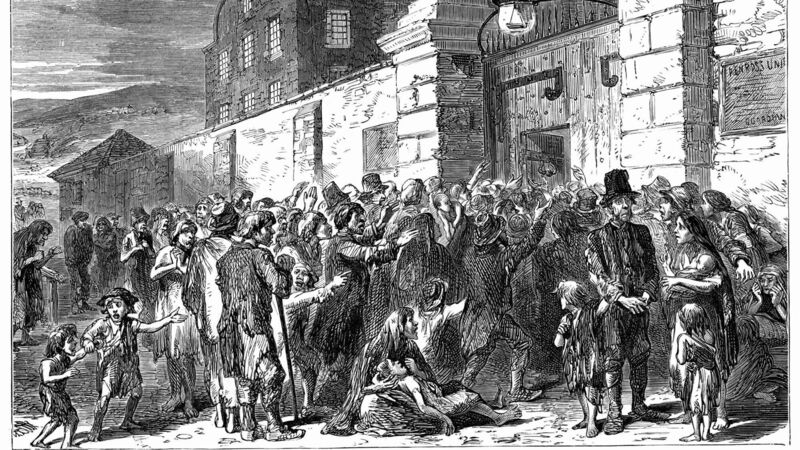Joyce Fegan: Action needed over petty wars of words in housing

Illustration of Famine victims at a workhouse gate from "The life and times of Queen Victoria" by Robert Wilson (1900). It is estimated that between 250,000 and 500,000 Irish families were evicted from their homes during the Famine years. Photo: The Print Collector/Getty Images
"The fact is a fiction," said the late playwright Brian Friel. He was referring to memory, and how it might not be the most accurate of historical representations, but still, it holds a reckonable force, a truth, of some kind.
If you take a left out of Delphi Resort, that almost rite-of-passage Irish childhood destination in Connemara, you'll follow the road until you arrive at one of those Wild Atlantic Way signs. It is the Doolough Valley Famine Memorial, remembering the 400 men, women and children who walked from Louisburgh to Doolough in the spring of 1847, in search of food and tickets to a workhouse. Both desires were refused. And so, in very bad weather, they attempted to return to where they had come from. Many perished on the journey back.















